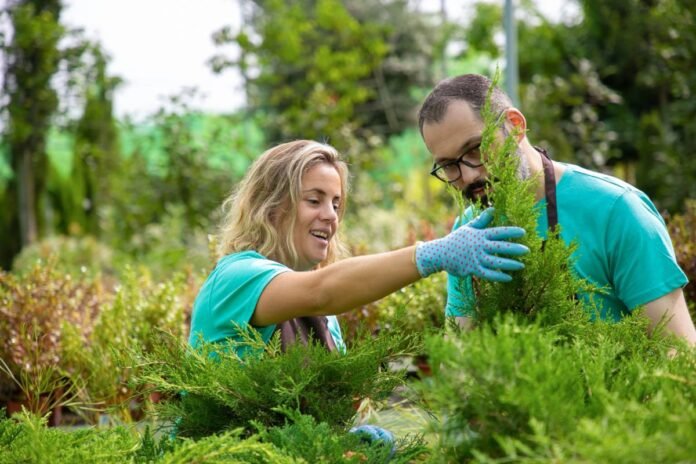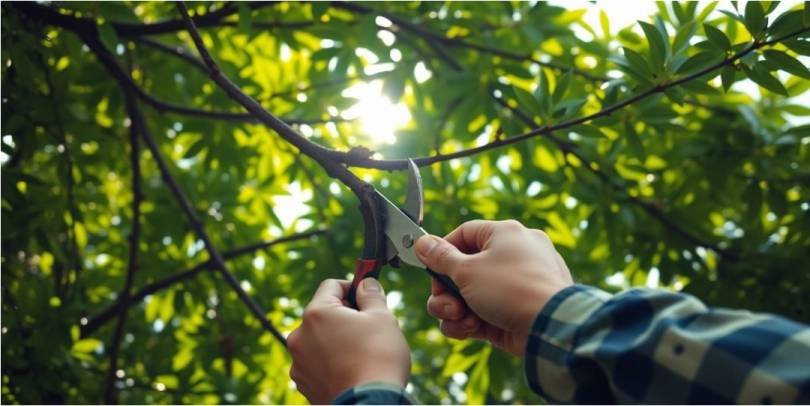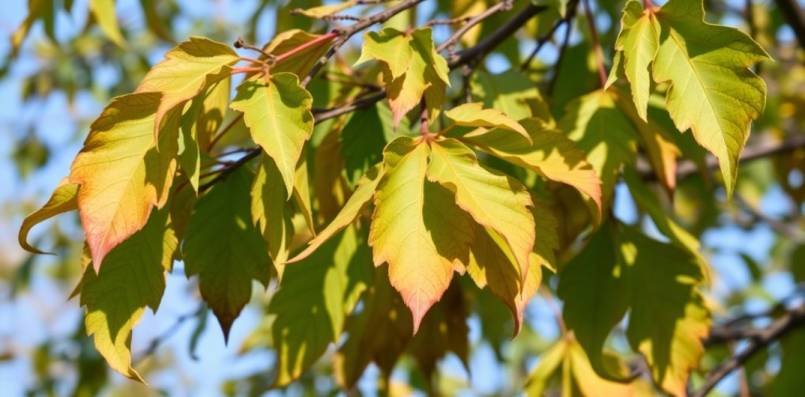It’s easy to overlook the subtle signals your trees might be sending. Paying attention to these early indicators can make a big difference in maintaining their health and preventing more serious issues down the line. If you notice your trees aren’t looking their best, it’s time to take a closer look.
Examining Branches for Weakness
When you see branches or twigs on the ground, especially when there hasn’t been severe weather, it’s a red flag. Diseased or stressed branches often become brittle and dry. A simple test is to try snapping a suspect twig; if it breaks easily, it’s likely weak. Healthy branches usually have some flexibility. Inspecting the rest of the tree for similar brittle branches can help you gauge the extent of the problem. This kind of weakness is a common sign of tree distress.
Identifying Fungal Growth
Fungi can appear on trees in various forms, and not all of them are harmful. However, it’s wise not to assume any fungal growth is benign. Any unusual growths on your tree should be checked by a professional. They can help identify the specific type of fungus and determine if it poses a threat to the tree’s health. Early detection of fungal issues is key to managing them effectively.
Noticing Discolored or Dropping Leaves
Leaves that turn yellow or brown prematurely, or drop much earlier than usual, are classic signs of trouble. This discoloration can point to various issues, such as nutrient deficiencies, pest infestations, or specific diseases like bronze leaf disease, which commonly affects poplar and aspen trees. If your tree’s foliage looks less than lush, it’s a clear signal that the tree needs attention.
Assessing Tree Health and Structure
It’s important to regularly check on your trees to make sure they’re doing well. Sometimes, the signs that a tree needs attention aren’t immediately obvious. Looking closely at the tree’s structure can tell you a lot about its overall health.
Evaluating Branch Breakage
Keep an eye out for branches that have broken off or are hanging precariously. If you notice a lot of fallen branches, especially when there hasn’t been severe weather, it’s a sign the tree might be weak. Healthy branches are usually flexible, while diseased or damaged ones tend to be dry and brittle. If you can easily snap a branch, it’s likely in poor condition. This structural weakness can make the tree more susceptible to damage from wind or snow.
Spotting Signs of Disease or Pests
Unusual symptoms are a big clue. Look for things like leaves that are discolored, spots on the bark, or even small holes. Fungal growth on the trunk or branches is another indicator that something isn’t right. These signs can point to underlying issues like insect infestations or fungal infections that weaken the tree’s structure. Addressing these early can prevent more serious problems.
Observing Unusual Growth Patterns
Trees can also show distress through their growth. If a tree looks lopsided, leans heavily to one side, or has multiple main stems competing for dominance, its structure might be compromised. These unusual growth patterns can be caused by various factors, including poor light exposure, root problems, or past damage. Proper pruning can help correct these imbalances, promoting a stronger, more stable structure that can better withstand environmental stresses.
Understanding When Pruning is Necessary
Addressing Dead or Dying Branches
When you see branches that are brittle, leafless, or discolored, it’s a clear sign they’re no longer alive. These dead or dying branches are not only unsightly but also pose a safety risk. They can break off unexpectedly, especially during windy weather, potentially causing damage or injury. Removing these dead limbs is a key part of proper tree care, allowing the tree to direct its energy toward healthy growth. It’s important to address dead or dying branches promptly.
Managing Broken or Damaged Limbs
Storms, strong winds, or even animal activity can lead to broken or damaged limbs. These compromised branches can weaken the tree’s overall structure and create entry points for diseases and pests. Pruning these damaged limbs is essential for the tree’s recovery and long-term health. It helps prevent further splitting or tearing and encourages the tree to heal properly. Managing broken or damaged limbs is a critical step in maintaining tree vitality.
Correcting Overcrowded Canopies
An overcrowded canopy can prevent sunlight and air from reaching the inner parts of the tree. This lack of circulation can create an environment where fungal diseases thrive and can also lead to weaker branch growth. Selective pruning to thin out the canopy improves airflow and light penetration. This process helps the tree maintain a healthier structure and reduces the likelihood of disease. Correcting overcrowded canopies is a proactive measure for tree health.
Detecting Environmental Stressors
Trees, much like us, can be affected by their surroundings. Various environmental factors can put a strain on your trees, leading to visible signs of distress. It’s important to recognize these indicators so you can address them before they cause significant harm.
Identifying Herbicide Exposure
Accidental exposure to herbicides can be detrimental to trees. If you live near agricultural areas or use weed killers yourself, be aware of potential drift. Signs of herbicide exposure can include twisted or deformed leaves, stunted new growth, or even entire branches dying off on one side of the tree. This type of damage can make a tree look quite peculiar, with growth patterns that are clearly unnatural.
Assessing Winter Damage
Harsh winters can leave their mark on trees. Look for cracks in the bark, often called frost cracks, which can form due to extreme temperature fluctuations. Evergreens might show browning needles from drying out during the cold months. Heavy snow and ice can also cause branches to snap. Proper pruning after winter can help remove damaged limbs and prevent further issues.
Recognizing Sap Leakage
Sap leaking down a tree’s trunk can signal underlying problems. This often indicates diseases caused by fungi or bacteria, which can weaken or even kill branches, or the entire tree if left untreated. While some minor sap flow can be normal, significant or unusual leakage warrants a closer look. It’s a good idea to have a professional assess the situation to determine the cause and the best course of action for the tree’s health.
Seeking Professional Assistance
When to Contact Grant Brothers Tree Service
If you’re unsure about your tree’s condition, reaching out to a professional is a smart move. They can help figure out what’s wrong and guide you on what to do next. Don’t wait too long if you think your tree needs attention. Trees that are starting to decay can become hazards quickly. Falling branches or even entire trees can cause damage, but knowing the problem and treating it reduces the risk. Contacting Grant Brothers Tree Service can provide more information on tree upkeep, preventing diseases, and handling problem plants.
Benefits of Expert Tree Care
Tree pruning can be risky, especially with larger trees or those near buildings. Professionals use the latest tools and methods for safe and efficient work. They offer services from regular pruning to emergency care, with solutions made for each customer’s needs. They focus on great service, understanding your worries, and meeting your expectations. They also use methods that are good for the environment, helping trees and the areas around them.
Preventing Future Tree Problems
Knowing when your trees need pruning is important for their health, safety, and looks. By spotting the signs and understanding the benefits of care, you can help your trees thrive. When it comes to getting professional tree care, Grant Brothers Tree Service is a name you can trust. With their knowledge and commitment, they’ll keep your trees in good shape. It’s better to act before a problem gets worse. Reach out to them today to give your trees the attention they deserve.
Common Tree Ailments and Their Indicators
Signs of Insect Infestation
Trees can face a lot of trouble from tiny invaders. Keep an eye out for chewing marks on leaves or bark, small holes, or even visible bugs. Sometimes, you might see sticky residue, which is often honeydew produced by sap-sucking insects. A sudden drop in leaves, especially if they look chewed or have holes, can also point to an insect problem. Early detection of insect infestation is key to preventing widespread damage.
Symptoms of Fungal Infections
Fungal growth on trees can show up in various ways. You might notice spots on leaves, powdery mildew, or even larger mushroom-like growths on the trunk or branches. Some fungal infections cause wilting, dieback of branches, or discolored leaves that drop prematurely. If you see any unusual growths or patterns on your tree, it’s worth investigating. Identifying the specific fungal infection is important for proper treatment.
Detecting Root Damage
Root damage is often harder to spot since it happens underground. However, signs can include a generally unhealthy appearance, like stunted growth, yellowing leaves, or a thinning canopy. If a tree suddenly seems unstable or leans more than usual, it could indicate root problems, perhaps from construction, soil compaction, or even animal activity. A tree that’s losing leaves out of season might also be signaling distress from its roots.
It’s important to remember that many of these signs can overlap, making it tricky to diagnose the exact issue without professional help.
Sometimes, a tree might look fine on the surface but have underlying issues that are not immediately apparent. Regular checks can help catch problems early.
Here are some common indicators:
- Leaf Discoloration: Yellowing, browning, or spotting can signal nutrient deficiencies, disease, or pest issues.
- Branch Dieback: Branches that are dry, brittle, and lack leaves, especially starting from the tips, often indicate a problem.
- Unusual Growths: Fungal bodies, galls, or cankers on the trunk or branches are clear signs of trouble.
- Bark Issues: Cracks, peeling bark, or sap leakage can point to disease, insect activity, or environmental stress.
When in Doubt, Call a Pro
Keeping an eye on your trees is a good idea. You might notice things like dead branches, weird fungus, or leaves that look off. If you see any of these signs, or if you’re just not sure what’s going on with your tree, it’s probably best to get a professional arborist to take a look. They know what to do to figure out the problem and help your tree get back to being healthy. Don’t wait too long, because a tree that’s struggling can become a hazard. Getting it checked out early can save you a lot of trouble down the road.


